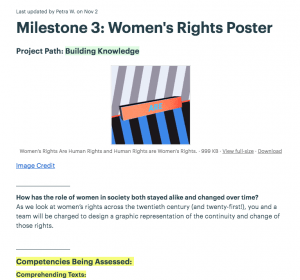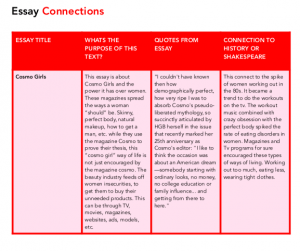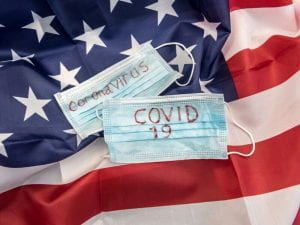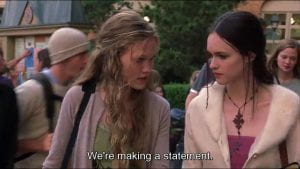I Hope This Doesn’t Get Me Killed
This week in class, we have been breaking down the who, what, where, and why’s surrounding the topic of new religious movements. New religious movements are more commonly known as “cults,” however, it is more appropriate to call them a new religious movement when academically analyzing them, which is what I’ll be doing today.

At first, I thought this topic seemed a little odd to study in class as I consider NRM (new religious movement) more of an outside-of-school subject. I’ve always thought of them as a topic in the realm of true crime, never as something to learn in school. Throughout a few classes, I realized that NRMs are not just this scary unknown concept I watch Netflix series about—they are something that exposes fascinating human behaviour (on both sides, the members of the NRM and the leaders of it). While some NRMs may look too crazy and theatrical to be something of substance to study, analyzing them provides a lens of understanding human nature. Coincidentally, that lens of understanding applies to every topic we have studied this quarter as every catastrophe can be traced back to the question of “why do humans _______?”
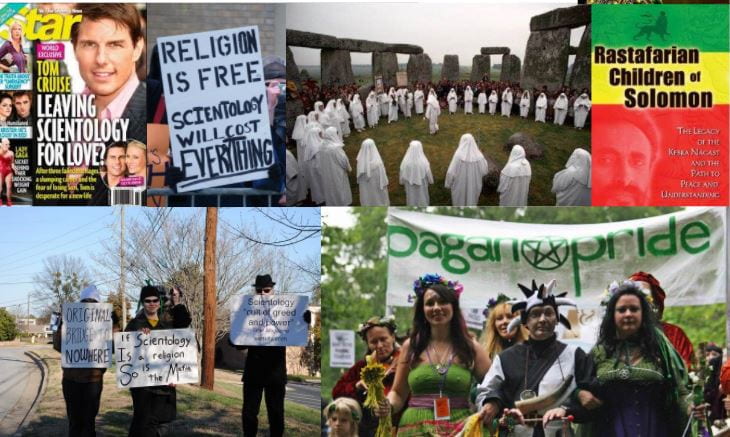
In class, we have mainly discussed NRMs that no longer exist. For example, the Peoples Temple, Children of God, and NXIVM. There is a wide variety of reasons why a NRM may no longer exist—harmful media exposure, legal reasons, murder/suicide, members losing faith in their leader, and much more. While non-active NRMs are important to analyze, I believe studying ones that exist in our current day is just as valuable, and that is why this post will be about the one and only, Church of Scientology.

Scientology is a unique example of a NRM as it went from a radical ‘cult’ to a certified religion in countries like America, Italy, and South Africa. In 1957, 3 years after Scientology was established, the IRS legitimized Scientology as a religion by granting them tax exemption for “religious purposes”. While this exemption was battled in 1967, Scientology’s in America has been officially tax-exempt since the ’90s. This decision sustained the uprising of “America’s only new religion of the 20th century”, Scientology.
 I would love to explain all of Scientology to you lovely readers, but this blog would be a 50 part series if I attempted that. I genuinely have never encountered a more complex topic to research and write about. Scientology is the most confusing, intense, and mysterious topic I have read about, and unless I join it myself, I will not truly understand it. The only information on this NRM is either from the Church’s website or ex-members, as current members aren’t generally allowed to speak of it. There is no defined truth, and because of that, Scientology is a damn mystery.
I would love to explain all of Scientology to you lovely readers, but this blog would be a 50 part series if I attempted that. I genuinely have never encountered a more complex topic to research and write about. Scientology is the most confusing, intense, and mysterious topic I have read about, and unless I join it myself, I will not truly understand it. The only information on this NRM is either from the Church’s website or ex-members, as current members aren’t generally allowed to speak of it. There is no defined truth, and because of that, Scientology is a damn mystery.

 Thanks to our lack of knowing what precisely goes on in Scientology, the only reliable information we have is history, so let’s look at it! Scientology was established in 1954 by L. Ron Hubbard, a famous science fiction writer. No one truly knows how many members of Scientology there are, but according to worldwide counts, there are a few hundred thousand. That amount is strange as the Church of Scientology claims to gain 4.4 million new members per year.
Thanks to our lack of knowing what precisely goes on in Scientology, the only reliable information we have is history, so let’s look at it! Scientology was established in 1954 by L. Ron Hubbard, a famous science fiction writer. No one truly knows how many members of Scientology there are, but according to worldwide counts, there are a few hundred thousand. That amount is strange as the Church of Scientology claims to gain 4.4 million new members per year.
Scientology’s core beliefs derive from Hubbard’s 1950 book titled “Dianetics: The Modern Science of Mental Health”. This book revealed to readers that they could gain “psychological enlightenment” through his concept of “mental auditing’. “The Modern Science of Mental Health” was the almost sort of scripture/bible for Hubbard’s new religious movement, Scientology. So yes, a well-known science fiction writer started a new “religion” based on a book he wrote.

Some more general beliefs of Scientology include that humans are immortal, peoples live more than one life, and that we possess infinite capabilities. According to Hubbard, each human has a “reactive mind that responds to life’s traumas, clouding the analytic mind and keeping us from experiencing reality”. Scientologists do not believe in mental illnesses due to that belief. All of this stems from Hubbards‘ great secret doctrine behind Scientology‘, which he said came to him when he closed his eyes. It would take me a few pages to explain this doctrine, so instead, I will show you a video. Yes, this is a clip from South Park, but through all of my research, it is very accurate to what we know of Hubbard’s doctrine, even though it is on a comedic show.
I know the explanation looks super science fiction-y and odd, and that is because it is. Remember, a well-known science fiction author wrote it.
Their belief system is about one out of hundreds of the aspects of Scientology. There is how Scientology implements these beliefs, how they recruit people, the way they live, and so much more. Here is a little video to get some more general context if you are interested.
So, if you are an open-minded person not too aware of Scientology, you may be wondering, “Luca, it’s just a religion. It may seem crazy, but people are allowed to believe what they believe…” While that is valid, I and many others would respond that it is not and never has been a religion; it is a NRM, aka a “cult.” The distinction between a religion and a NRM can be found within the amount of control the religion and its leader have over its members and how they use that control. What I mean by control is any action beyond the individual following the religion’s beliefs. Meaning, if faith becomes more than something you believe in and more something to pay for and or feel trapped in, it starts entering the territory of it being more than just a religion, a cult (NRM).
Christianity vs Scientology can express the significant contrasts between a religion and a NRM.

Christianity does not require your money in order to grow your faith or try to ruin your life if you no longer believe in the religion. Christianity does not restrict anyone from critiquing it or talking negatively about it with non-Christians or fellow Christians. Scientology, however, does all of these. I am all for people bettering themselves and finding something to believe in that gives them hope—what I’m not okay with is a religion exploiting that eagerness to improve. The use of money makes this ‘religion’ seem more like a business… This thought is not just my own— while yes, some countries like the US and Italy recognize Scientology as a religion, others like Canada and Germany do not. Germany even tried banning it from their country as they believed it was a business enterprise.
People go into Scientology wanting to better themselves; the website and building locations all have propaganda about being the best you, fixing the issues in your life. In reality, all it does is take your money (I’m talking hundreds of thousands $$) and trap you in their NRM. Sorry but… what religion requires hundreds of thousands of dollars? Scientology requiring money to join and learn is the main reason why Scientology fits the definition of a NRM.

It’s easy to say you wouldn’t fall into a manipulative NRM but as we know, saying is easier than doing. I spent 5 minutes on the Scientology website, and If I was someone with no prior knowledge of the Church, I see no apparent reason that would cause suspicion or disinterest in the Church. Take a look here yourself; they tell you they can help you with stress, anxiety, work, drug abuse, love, literally everything ordinary people struggle with. “The Way to Happiness,” “Drug-free Free World,” and “Mental Health Reform” are all things the website says that the Church of Scientology provides for its members.

 Along with their website/advertising being scarily attractive, they have the support of many celebrities. That may seem irrelevant, but when someone like Tom Cruise, one of the most famous actors of all time, advocates for something, of course, many people are going to listen. So many big names in Hollywood support Scientology—this means that Scientology has a grasp over their celebrity member’s fans because they trust these actors as they may think, “ah well, if my favourite actor is in Scientology, I want to be in Scientology!” The fact they have celebrities in their Church means they also just gain society’s general trust. For some reason, everyone acts like celebrities are these godlike, smart people who know best, when in reality, they are people just as susceptible to NRM as everyone else. Luckily, this mindset is diminishing more and more as celebrity ex-members speak out on the dark side of Scientology (for example, Leah Remini).
Along with their website/advertising being scarily attractive, they have the support of many celebrities. That may seem irrelevant, but when someone like Tom Cruise, one of the most famous actors of all time, advocates for something, of course, many people are going to listen. So many big names in Hollywood support Scientology—this means that Scientology has a grasp over their celebrity member’s fans because they trust these actors as they may think, “ah well, if my favourite actor is in Scientology, I want to be in Scientology!” The fact they have celebrities in their Church means they also just gain society’s general trust. For some reason, everyone acts like celebrities are these godlike, smart people who know best, when in reality, they are people just as susceptible to NRM as everyone else. Luckily, this mindset is diminishing more and more as celebrity ex-members speak out on the dark side of Scientology (for example, Leah Remini).
Once one of these tactics of recruiting members works, either the self-help aspect of the Church of acting on the trust of others, step two of the NRM conditioning can begin. “Brainwashing” is what some may call it. Scientology, like many NRMs, makes its new or questioning members go to classes and learn about the Church. Unprotected and interested people are very susceptible to believing anything that is told to them, which is why a lot of NRM start with basic classes. After some classes, they are told they need to begin “auditing” aka counselling sessions with Scientologists.


Due to their beliefs that we humans have a “reactive mind that responds to life’s traumas, clouding the analytic mind and keeping us from experiencing reality,” therapy/counselling is a big part of it all. They make you pay a lot of money for these sessions where Scientologists make you expose all your trauma and secrets so you can be ‘clear.’ This clearness is a part of the whole belief system and how humans live many lives. They also record and keep this all, so they can ruin your life with your secrets if you ever try to leave.

That is just 1 out of 1000 of the brutal things they do to these defenceless people seeking to better themselves and help others. There is so much more that happens beyond classes and counselling, and they all highlight now Scientology is not just a religion; it is a cult (NRM). Scientologists aren’t allowed to consume outside media, talk to other Scientologists about the Church, and have to attend a certain amount of Scientology-related class/work/church per day. To put Scientology’s dominance in perspective, there are even whole “cities” like Clearwater in Florida owned and dedicated to Scientology-related people or companies! Scientology is all about levels, and once a member is secured on the beliefs, they will do ANYTHING to reach the next level.
Long withstanding religions like Christianity, Islam, and Buddhism are great examples of common traditional religions (a non-NRM). They all consist of a set of beliefs that anyone can follow however intensely they want. There isn’t the aspect of immense control.  You don’t have to pay; you are allowed to question the religion, and you have the choice whether you attend Church or any of their religious meetings. They are examples of a religion an individual can follow and still have a normal, healthy, and functioning life without fear or manipulation. Scientology has so much control over its members it basically thinks for them, which is something we don’t see in traditional religions. Critical thinking and freedom are vital for a healthy relationship with religion, and Scientologists lack both, which confirms it is a new religious movement.
You don’t have to pay; you are allowed to question the religion, and you have the choice whether you attend Church or any of their religious meetings. They are examples of a religion an individual can follow and still have a normal, healthy, and functioning life without fear or manipulation. Scientology has so much control over its members it basically thinks for them, which is something we don’t see in traditional religions. Critical thinking and freedom are vital for a healthy relationship with religion, and Scientologists lack both, which confirms it is a new religious movement.
I hope anyone who reads this looks more into Scientology as I find it genuinely one of the most fascinating things happening in our current day.

























